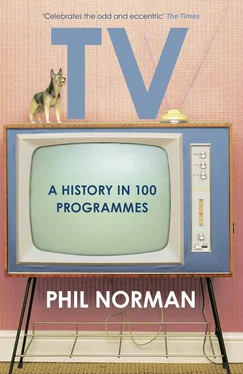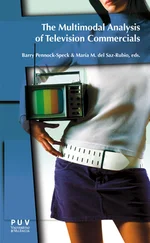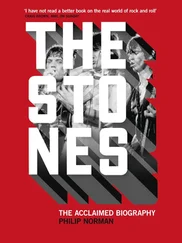This indulgently whimsical ceremony wasn’t unique to Cavalcade , but on Gleason’s watch it grew into a kind of baroque mass, initiating the audience into his comic realm. The logic of replicating the communal aspect of stage variety on such a private, domestic medium seems odd today, but a large proportion of Gleason’s working class audience, unable to afford their own TVs, watched en masse in the bars and taverns of the Union’s major cities (DuMont’s limited coverage never reached the small towns), creating their own mini-crowds who joined in with gusto. Vaudeville’s voodoo link with the audience could cross the country this way. Performer and punter were in cahoots.
Cavalcade wasn’t all Pavlovian faff. The main body of the show boasted as much meat as that of its star. Dance numbers and musical guests were interspersed with extended character sketches taken from life – Gleason’s life. At one end of his one-man cross-section of society was playboy Reggie Van Gleason III. At the other, Chaplinesque hobo The Poor Soul. Somewhere in between came serial odd job failure Fenwick Babbitt and The Bachelor, a pathos-laden mime act in which Gleason would prepare breakfast or dress for dinner with all the grace and finesse you’d expect from a long-term single man, to the melodious, mocking strains of ‘Somebody Loves Me’. Hobo aside, Gleason had lived them all.
Gleason’s fullest tribute to his Bushwick roots was the warring couple skit that became known as ‘The Honeymooners’. Gleason played Ralph Kramden, a short-fused temper bomb of the old-fashioned, spherical kind; a scheming bus driver with ideas beyond his terminus. He lived with his more grounded wife Alice in a cramped, walk-up apartment at 328 Chauncey Street, a genuine former address of Gleason’s and possibly the most accurate recreation of breadline accommodation in TV comedy. In this washboard-in-the-sink, holler-up-the-fire-escape poverty, Kramden and his unassuming sewage worker neighbour Ed Norton (Art Carney) sparred, plotted and generally goofed around. The working-class- boy-made-good was talking directly to his peers about life as they knew it, as surely as if they were sat at the same bar. The aristocracy of executives and sponsors that made it technically possible didn’t figure in the exchange at all. They delivered the star, and then made themselves scarce until the first commercial break. It would be television comedy’s struggle to preserve this desirable set-up against tide after tide of neurotic, censorious meddling from above.
Cavalcade of Stars became DuMont’s biggest show. Naturally, this meant Gleason was snapped up by CBS within two years. His fame doubled, and that of ‘The Honeymooners’ trebled. It broke out to become a sitcom in its own right, but oddly never achieved quite the same level of success outside its variety habitat. Meanwhile Sid Caesar, Imogene Coca and a stable of future comedy writing titans seized the vaudeville crown with NBC’s Your Show of Shows .
Gleason himself wasn’t immune to the odd misstep. In 1961 he hosted the high-concept panel game You’re in the Picture , in which stars stuck their heads through holes in paintings and tried to determine what they depicted. The première bombed so hard that week two consisted entirely of Gleason, in a bare studio with trusty coffee cup to hand, apologising profusely for the previous week. He was reckless, chaotic and hopelessly self-indulgent, but he instinctively knew when he’d failed to entertain. He was also relentlessly determined, signing off his marathon mea culpa with a forthright, ‘I don’t know what we’ll do, but I’ll be back.’ Television couldn’t wish for a better motto.
CRUSADER RABBIT (1950–1)
NBC (Television Arts Productions)
TV’s first bespoke cartoon.
AMERICAN CARTOONS DOMINATED FORTIES cinema. The heart-on-sleeve perfectionism of Disney and the demolition ballets of Warner Brothers were known, loved and merchandised throughout the world. But when television began to look like a viable proposition, the animation giants kept their distance: too small the screen, too monochrome, and most important, too cheap the going rate. It might be good for the odd commercial or as a place to dump black-and-white shorts even the dankest fleapit would no longer touch, but cartoons made especially for TV? The idea might have seemed a joke to the main animation studios, but there was a gap in the media market waiting to be filled. This one snugly accommodated an adventurous animal.
Crusader Rabbit and his faithful sidekick Ragland T ‘Rags’ Tiger were a pairing in the short-smart/big-dumb cartoon tradition that had its origins in Steinbeck’s Of Mice and Men . Their creator was Alex Anderson, nephew of the self-styled Woolworth of cinema animation, Paul Terry. Anderson reduced his uncle’s cheap and cheerful formula even further, basing his methods on a sequence in Disney’s behind-the-scenes cartoon feature The Reluctant Dragon which showed an embryonic cartoon in animated storyboard form – simple cuts from one still drawing to the next, smartly timed to the soundtrack. Anderson took the idea and applied it to a finished series.21
Together with old friend Jay Ward handling production duties, Anderson formed Television Arts Productions. Equipped with an army surplus Kodak film camera and several veteran draughtsmen, TAP began production, leaving no corner uncut. Single poses lasted on screen for anything from one to fifteen seconds, and loops of motion were reused with shameless regularity. Verbal gags did most of the work, but mouth movements were minimal – in the pilot, a fast-talking radio announcer blatantly hides his behind a sheet of paper.
The pilot impressed NBC enough to commission a series, at $2,500 per episode – in the labour-intensive animation world, about as cheap as you could get. Crusader Rabbit rode out, sponsored by that great friend of early TV innovation, Carnation Evaporated Milk, at 6 p.m. on 1 August 1950. The show aired every weekday for the best part of a year, pitting the tenacious pair against adversaries Dudley Nightshade, Whetstone Whiplash and Achilles the Heel.
As production stepped up, Ward’s talent came to the fore. While Anderson supervised the visuals, Ward took charge of the dialogue recording sessions, coaching the voice talent and editing to keep things as snappy and fast-moving as possible. This was a practical necessity – with budgets this tight, editing in sound only made economic sense – but it gave a quickfire ebullience to the otherwise static show, emphasising verbal gags in a way which would shape Ward’s later output and TV animation in general.
It also instigated a less happy animation tradition. Jerry Fairbanks, Television Arts’ commercial partner in the Crusader Rabbit venture, turned out not to be as financially secure as he claimed. An uneasy NBC sequestered all 195 Crusader Rabbit cartoons as collateral.22 Ward and Anderson found themselves without a franchise, their stake in the original and rights to the characters having been legally spirited away. This sort of custody battle, with the creators forever on the losing side, would become a feature of TV cartooning, where the bottom line drags heavily. Crusader Rabbit would eventually be reborn, via other hands, in 1957.
Ward started afresh, in tandem with cartoon veteran Bill Scott, to create a plethora of wisecracking properties that took Crusader Rabbit’ s chattering statue model and upped the wit, tempo and volume. This began with a blockbuster that aped its progenitor’s character template – The Adventures of Rocky and Bullwinkle . Meanwhile William Hanna and Joseph Barbera, ex-MGM animators who brought Tom and Jerry to life and were briefly engaged by Ward for a legally embargoed Crusader Rabbit revival, borrowed the limited animation style for their own work. The Ruff and Reddy Show , in which a smart little cat and a big stupid dog engaged in pose-to-pose capers, was followed by Huckleberry Hound , Yogi Bear and flatly coloured, ever-blinking cartoon versions of sitcoms like The Honeymooners ( The Flintstones ) and Bilko ( Top Cat ). Even Uncle Paul Terry was lured to the small screen for, among others, Deputy Dawg . Vast empires of severely restricted motion conquered television with phenomenal speed – sideways on, with feet reduced to a circular blur, passing the same three items of street furniture every five seconds.
Читать дальше












